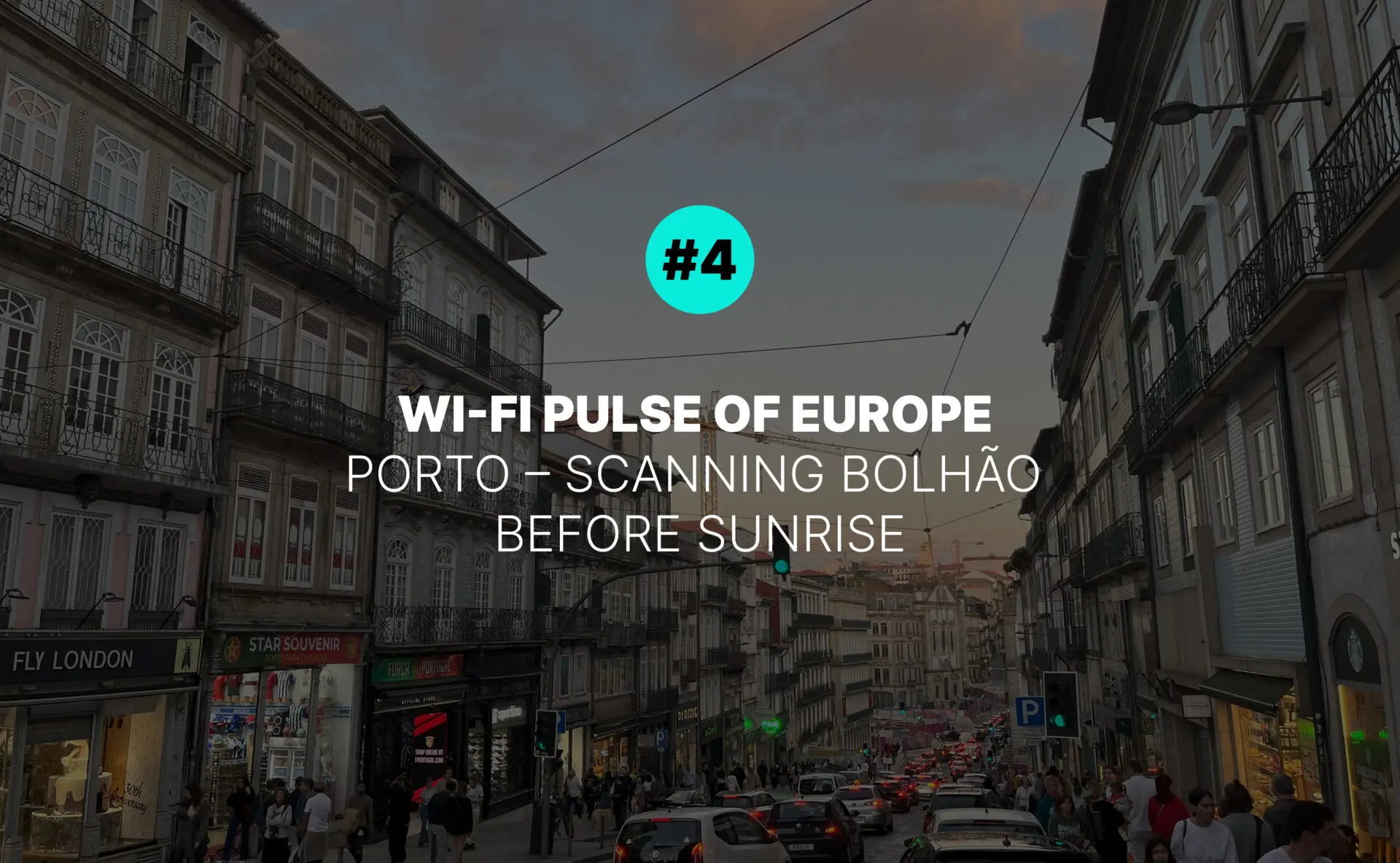Portugal wasn’t the original destination. The next site survey was scheduled in Vigo, Spain, and the most practical route led through Porto. That opened the door to a short stopover, offering a chance to take in the atmosphere of a country not yet visited. I spent one day exploring the city, walking the narrow streets, attending a Fado performance, and sampling more than a few varieties of port wine.
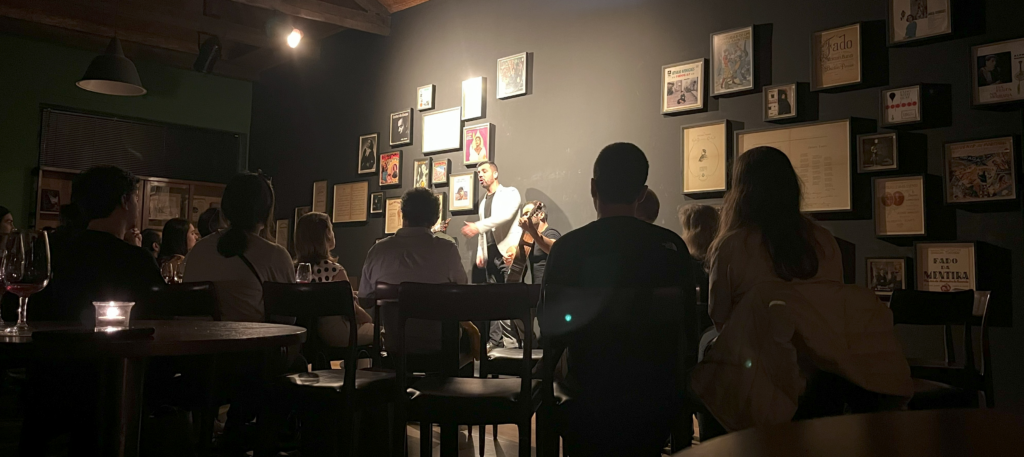
The next morning, just after the night had ended but before the city had fully awakened, I set out to scan Bolhão. It was Sunday at dawn, 3 November 2024. The bakeries were still closed, but the clubs had emptied, and a few scattered partygoers still lingered on the sidewalks. Bolhão’s slightly hilly terrain made the scooter a particularly welcome companion. I rolled through nearly 380,000 square meters of urban terrain, collecting signal data while Porto quietly transitioned from nightlife to daylight.
Bolhão is one of Porto’s most iconic neighborhoods. Located in the heart of the city, it is known for its historic market hall, tiled facades, and the dense mix of old residential buildings and ground-floor shops. The area has long been a center of everyday commerce and local culture, where traditional grocers, bakeries, and cafés sit beside street art and boutique hotels. With its layered history and vibrant street life, it also turned out to be rich in wireless activity. Here’s what we found.
Total Broadcasts Captured
The signals we recorded came from a range of hardware types, including routers, access points, ISP-issued units, vehicles, and mobile hotspots. For simplicity, we refer to all of these as broadcasting devices. One device can operate on multiple frequency bands and may broadcast several network names (SSIDs) on each. This means the number of SSIDs is typically higher than the number of devices behind them. Throughout this article, we alternate between device-level and SSID-level analysis to provide a full picture of the wireless environment.
The wireless scan across Bolhão revealed a high volume of signal activity. We detected 6,439 physical broadcasting devices, which together emitted a total of 15,953 SSIDs. Of these, 12,544 were visible and 3,409 were hidden, meaning roughly one in five networks chose not to advertise their name publicly.
As expected in such a dense and mixed-use area, many devices operated on multiple frequency bands. A total of 2,166 devices broadcasted exclusively on 2.4 GHz, 1,252 only on 5 GHz, and 3,021 on both. Not a single device was observed using the 6 GHz band, marking Bolhão as one of the least future-facing survey zones we’ve encountered so far in terms of Wi-Fi spectrum adoption.

The sheer number of signals and the complete absence of 6 GHz-capable hardware paint a picture of a network landscape still dominated by legacy infrastructure, despite the neighborhood’s vibrancy and central location.
Wi-Fi Technology Versions
Bolhão’s wireless environment leaned heavily on Wi-Fi 4 and Wi-Fi 5, with these two technologies together making up the vast majority of all SSID broadcasts. Wi-Fi 6 showed moderate adoption, while legacy standards predating Wi-Fi 4 still appeared in small but measurable numbers.
What stood out most was the complete absence of Wi-Fi 6E and the very limited presence of Wi-Fi 7. Only seven SSIDs used the newest generation, placing Bolhão behind all other cities we have surveyed so far. Even those few Wi-Fi 7 networks were restricted to legacy frequency bands, with none making use of 6 GHz. In contrast, Helsinki’s residential Eira district, where a much smaller area was scanned, did show some early signs of 6 GHz activity.
This highlights that despite Bolhão’s central location and network density, its wireless landscape remains rooted in older standards. The rollout of tri-band and next-generation technologies appears to be progressing more slowly here than in other urban environments we have examined.
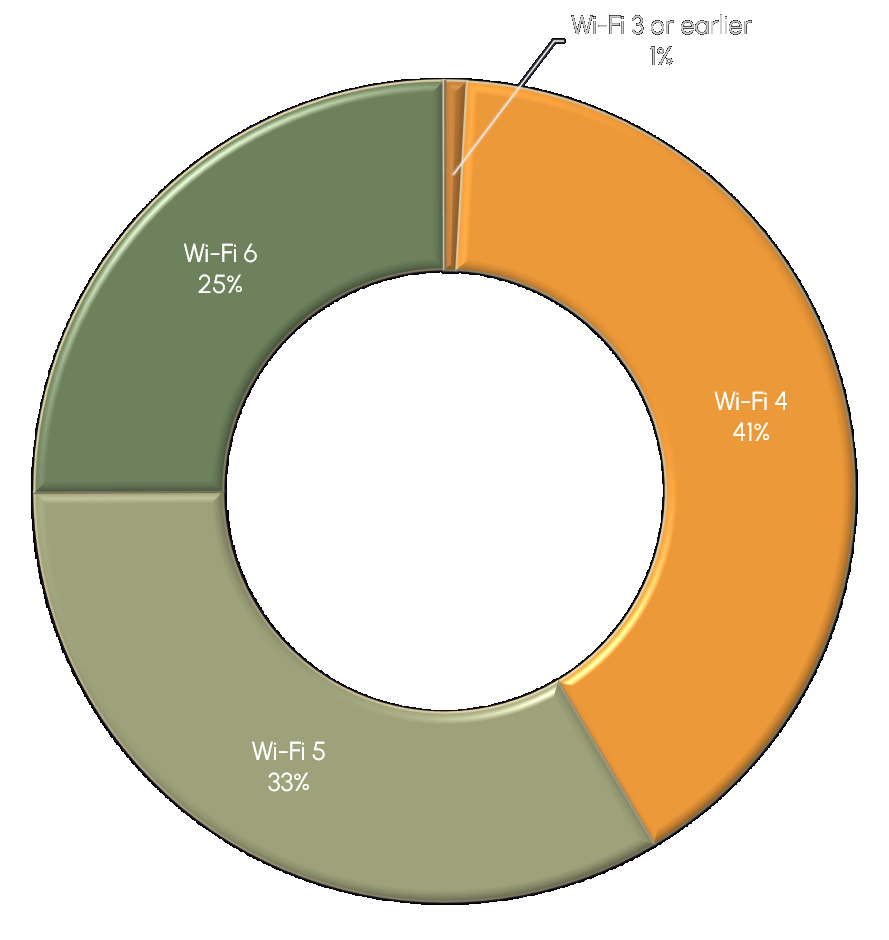
Channel Saturation
On the 2.4 GHz band, most networks were configured correctly, using non-overlapping channels and standard widths. Still, for every two well-configured devices, there was one that strayed from best practices. The proportion of misconfigured setups remained uncomfortably high, much like in Helsinki, where roughly one third of all devices used suboptimal settings.
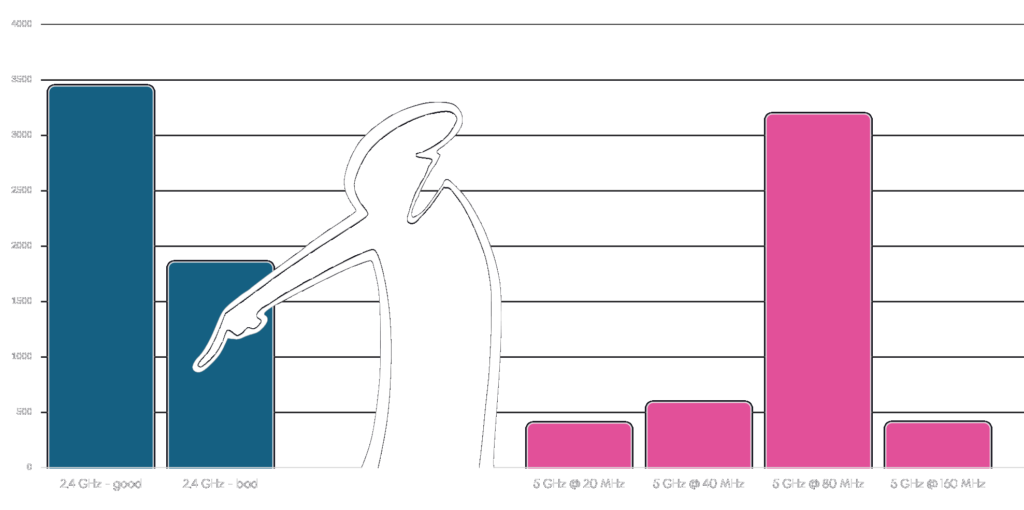
A similar trend emerged on the 5 GHz band, where the configuration patterns more closely resembled the Finnish distribution than the UK locations, with Edinburgh and Liverpool showing nearly identical ratios. On the 5 GHz band, the overwhelming majority of devices favored 80 MHz channel widths, with far fewer using narrower settings. This pattern suggests a strong emphasis on throughput, though it may come at the cost of spectral efficiency in busy environments. Fortunately, only a small fraction of devices opted for the widest 160 MHz setting.
No devices were found operating on 6 GHz frequencies, reaffirming that the adoption of next-generation tri-band technologies has yet to reach this part of the city.
SSID Naming Patterns
Of all the SSID broadcasts detected in the Bolhão district, 21 percent were hidden and 79 percent were visible. This fits the pattern observed in previous survey locations, where the share of visible network names typically ranged between 70 and 80 percent.
A large portion of broadcast networks follow predictable patterns, either default names assigned by ISPs or simple identifiers linked to apartment numbers, floor levels, or locations (e.g., 1_ANDAR_TRAS meaning “1st floor back,” 229-2Andar meaning “229, 2nd floor,” or ADA-3º andar meaning “ADA, 3rd floor”). This practical approach serves functional purposes like network segmentation or device tracking. In hospitality environments, SSIDs often reflect the brand or service offered, such as BessaHotel, Porto Royal Bridges, or CataloniaHotels, while residential deployments occasionally mix creativity with location indicators.
Beyond these local identifiers, many networks are shaped by the influence of major ISPs. The most prominent among these is MEO, with over 1,700 SSIDs containing the string MEO, ranging from MEO-WiFi to user-specific formats like MEO-1FBE80. Vodafone follows with an estimated 450 visible SSIDs, and NOS contributes around 150. These ISP-related networks typically include MAC fragments, router series codes, or standard prefixes. Their prevalence suggests a low rate of user customization, particularly in the residential segment. While such consistency simplifies provider-side diagnostics, it also makes networks more predictable and potentially more vulnerable to targeted attacks.
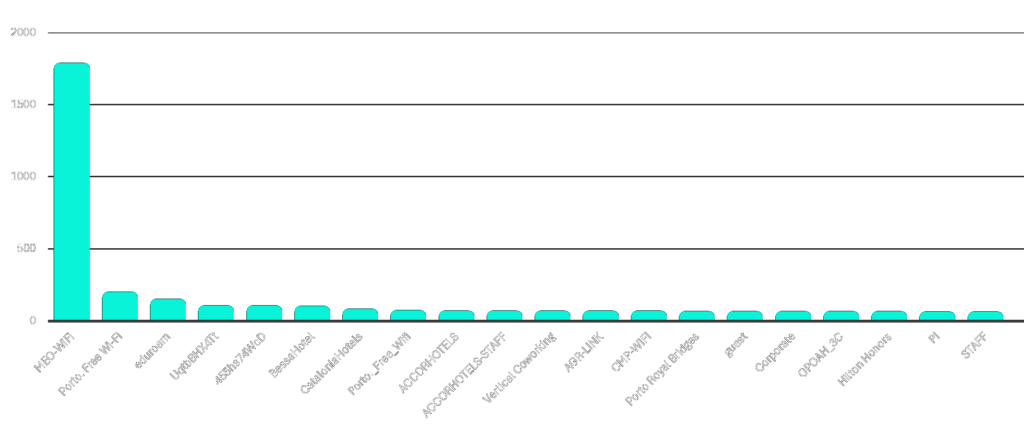
Amid the bulk of standardized and location-driven SSIDs, a few stood out for their uniqueness, humor, or symbolic value. These names reflect personal choices, cultural references, or intentional messaging:
- ***Privado*** is basically shouting “Keep out.” It’s the Wi-Fi equivalent of a locked door with a grumpy doorman.
- 0kYXTzsXvU9O8Y7fVPbupcDxMZ9mChTj looks like someone let their cat walk across the keyboard. Either that, or it’s a factory default nobody dared to touch.
- A Link to the Past is a clear nod to the Zelda universe. Somewhere nearby, a retro gamer is definitely smiling.
- ALIBABA might belong to an online shopping addict or just someone who likes magic caves full of treasure.
- Roubar WIFI também é crime. translates to “Stealing Wi-Fi is also a crime.” It’s not just a warning, it’s a whole mood.
- M.leão is likely shorthand for someone’s name, with “leão” meaning “lion” in Portuguese. It might refer to a person, a pet, or just someone with a bold sense of identity.
These names add a splash of personality to an otherwise predictable sea of MEO-WiFi and Vodafone-1234. They hint that behind each network name is a human touch, whether it’s a joke, a habit, a brand, or simply a decision not to be boring.
Who’s Powering Bolhão’s Wi-Fi?
The Wi-Fi infrastructure in Bolhão is driven by a broad spectrum of manufacturers, ranging from consumer-grade brands to enterprise-level providers. On the residential side, names like Huawei, TP-Link, Sagemcom, and Technicolor dominate the landscape, reflecting the widespread use of ISP-issued equipment in homes and apartments across the district.
Enterprise environments contribute a different layer to the mix. Devices from Cisco, Aruba, Ruckus Wireless, and Meraki point to deployments in hotels, offices, schools, and public buildings. Ubiquiti appears across both segments, bridging professional use and advanced home setups with its flexible product line.
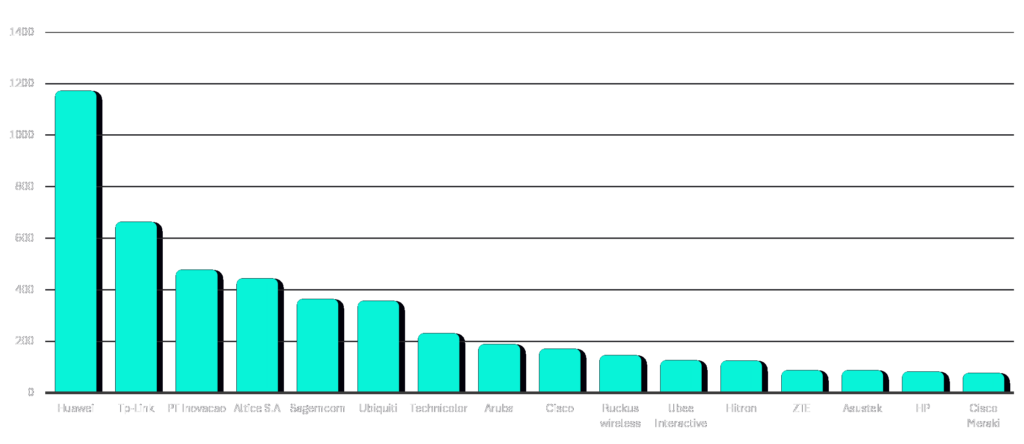
Some manufacturers appear less frequently but still reflect a diverse network ecosystem. Equipment from ZTE, D-Link, Zyxel, and Asustek shows that Wi-Fi in Bolhão is built on many technologies, supporting a wide range of users, budgets, and performance needs.
Closing Thoughts
Porto left a clear impression beyond wireless data. In just a short visit, the city’s atmosphere stood out with Fado in quiet streets, helpful locals, and a lively, tourist-filled center. Rush hour traffic was intense, but part of the city’s rhythm. With more to see than one day allows, it is a place worth going back to.
Bolhão gave us a compact, revealing look at urban Wi-Fi shaped by both old habits and new demands. Most networks rely on default setups, legacy standards, and cautious upgrades. Wi-Fi 4 and 5 still dominate, Wi-Fi 6 is present but limited, and 6 GHz is nowhere to be seen. Even Wi-Fi 7 sticks to older frequency bands.
Configuration patterns show the dominance of SOHO-grade equipment. Most networks use default or semi-automatic settings, favoring simplicity over precision. On 5 GHz, 80 MHz channels are common, driven more by factory presets than by user intent. Fine-tuning appears rare, with most setups running just as the router shipped.
Bolhão is not behind the curve by accident. It reflects what real-world connectivity often looks like: layered, practical, and slightly out of sync with the latest trends. This is not a tech showcase. It is a working neighborhood, and its wireless infrastructure mirrors the way people live and connect.
Next up is Vigo, just across the border in Spain. Same scanner, same feet on new streets.
What’s more, we’re taking requests. If there’s a place you think we should scan next, let us know, and we might just roll through with our spectrum analyzer.
Follow us on LinkedIn or sign up for our newsletter to get the next one straight to your inbox. If you’d like to see what’s going on inside your network, we’re just a message away.

